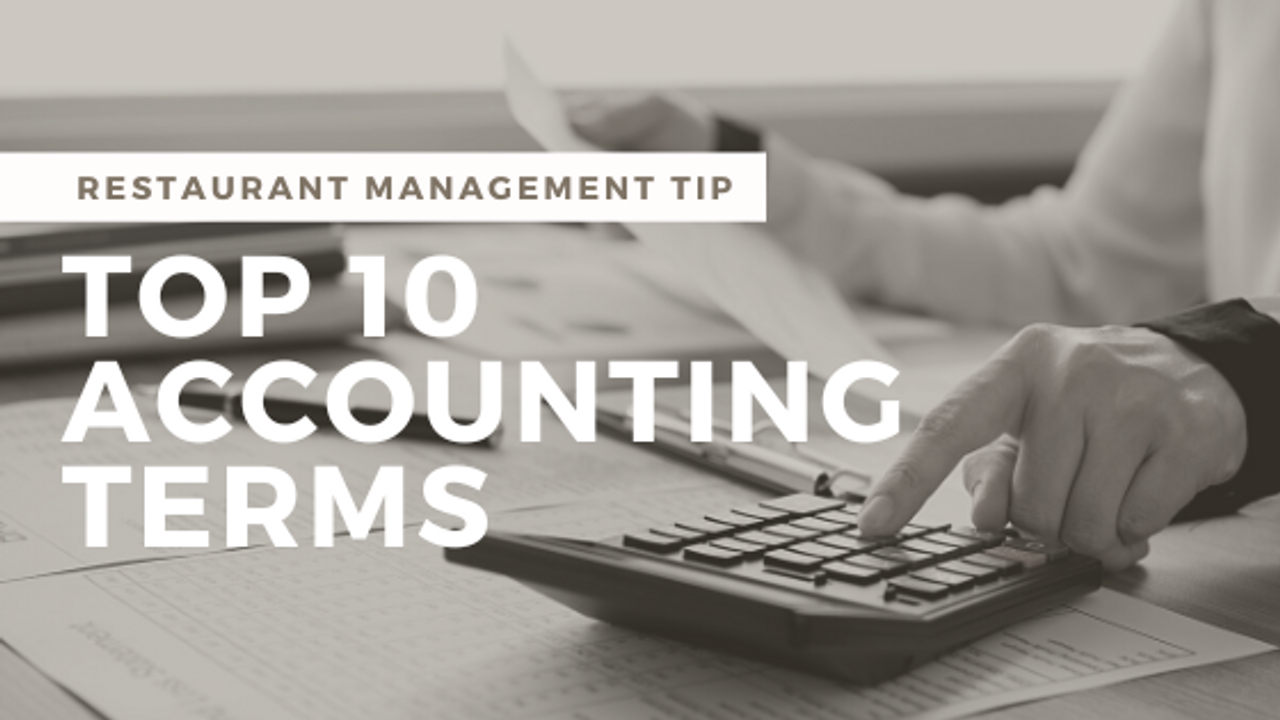Top 10 Restaurant Accounting Terms You Need to Know

Does looking at your restaurant financial statements give you a headache? Do you ever wonder what some of the terms your accountant throws at you mean? If you feel like you should already know what key accounting terms mean, and you're a little afraid to ask your accountant for clarification, you're not alone own. I'm going to share with you what I think are the top 10 restaurant accounting terms you need to know as a restaurant operator.
Term number one, accounts payable. These are basically expenses you owe that you haven't paid for. So in the restaurant world we have accrual accounting: earn, owe, use. That means when a shipment comes from your broad line distributor and you sign for it but don't pay for it, that is an accounts payable. You brought in product and owe them money. You keep track of that in our balance sheet called an accounts payable.
Term number two, accounts receivable. This is the opposite. This is when you sell something but haven't collected money yet. For example, if you have a catering job that you put on terms that calls for payment after a week after the party. It is money that you’re owed based on a sale.
Term number three, cost of goods sold. This is the cost of the product that you're using to bring in the money that you brought in. So for instance, if you sell food, you used product. Now the key here is this is not what your purchases are. It is an adjustment based on beginning inventory plus purchases minus ending to give you use. What leaves the shelves is what cost of goods sold is for the money you brought in by that sales category.
Term number four, gross profit. This one throws people a curve. It is not what you made. Gross profit is your sales minus your cost of goods sold. That's it. It's what's left over that you use to pay the rest of your expenses, including your labor cost.
Term number five, net income. Now this is the number you want to know, but it's still a little bit hairy, if you will. You find this on your profit and loss statement, otherwise known as your income statement, otherwise known as an operating statement. They all mean the same thing. What did you earn? But to be very clear, this is not your cash flow. It's earnings based on amortization, depreciation, interest expense, meaning the government regulations to show you what you owe taxes on. It's your adjusted income, what you're going to report as profit or loss.
Term number six, GAP, or generally accepted accounting principles. When you hear somebody say it’s set up according to GAP, that’s what they’re saying, but do know that you still need to know a little bit more about accounting. For instance, I can take all my use for food, and GAP is to take that food use and divide it into total sales, including bottled beer, draft beer, wine, liquor, and merchandise, and come up with this really tiny percentage of say, 10% or 5% cost of goods sold for food costs. It is right based on GAP, but you've got to understand, restaurant accounting is used by category into category sales, that we will only take our use for food and we're going to divide it into our food sales. So while GAP is generally accepted, it doesn't mean it's still right for you.
Number seven, balance sheet. Everybody gets familiar with their profit and loss statement, but what is the balance sheet? It's stuff and who owns the stuff. You may have food on the shelf, but if you owe your broad line distributor for it, they own it.
Term number eight, journal entry. It's basically a record of any credits and debits in one or more accounts. So if you have a journal entry for daily sales, it's going to show the sales by category. Enter food sales, bottled beer, draft beer, wine, liquor, and the offsetting entry. The other side is going to be how the money came in so it balances. Anytime you purchase something, anytime you pay a bill, these are journal entries. Some of them are done automatically through your software and some are manual journal entries. That's all it is. It's recording a specific transaction.
Number nine, fixed expenses. These are bills that stay the same every single month. So, if you have an SBA loan of $10,000 a month, that is a fixed expense.
Number 10, variable expenses. These are the opposite of fixed. They go up and down with sales, much like, say, your kitchen labor costs running 10%. As sales go up, you're going to spend more money, but it's still going to be relatively 10% of sales. As sales go down, you're going to spend less, but it'll be relative to 10% of sales.
While there's a whole laundry list of accounting terms you will ultimately need to know, these are a great starting point. I teach my members the importance of outsourcing their accounting, I think that is really something you shouldn't be doing. You should be working on budgets, marketing, leading the team, developing your team, leading the business forward. Accounting is one of those things that can take up hours and hours of time.
But understanding the ins and outs of accounting is important so you can get the most out of your accountant client relationship.
If you would like to learn how you can add 13% to your bottom line and get 2 days off per week from your restaurant – guaranteed – click to watch a video training I put together for restaurant owners: https://dsp.coach/transformation.
Be sure to visit my YouTube channel for more helpful restaurant management video tips.




